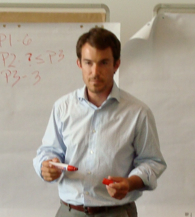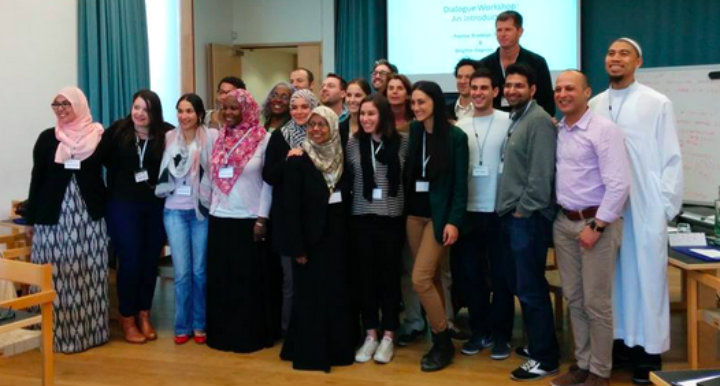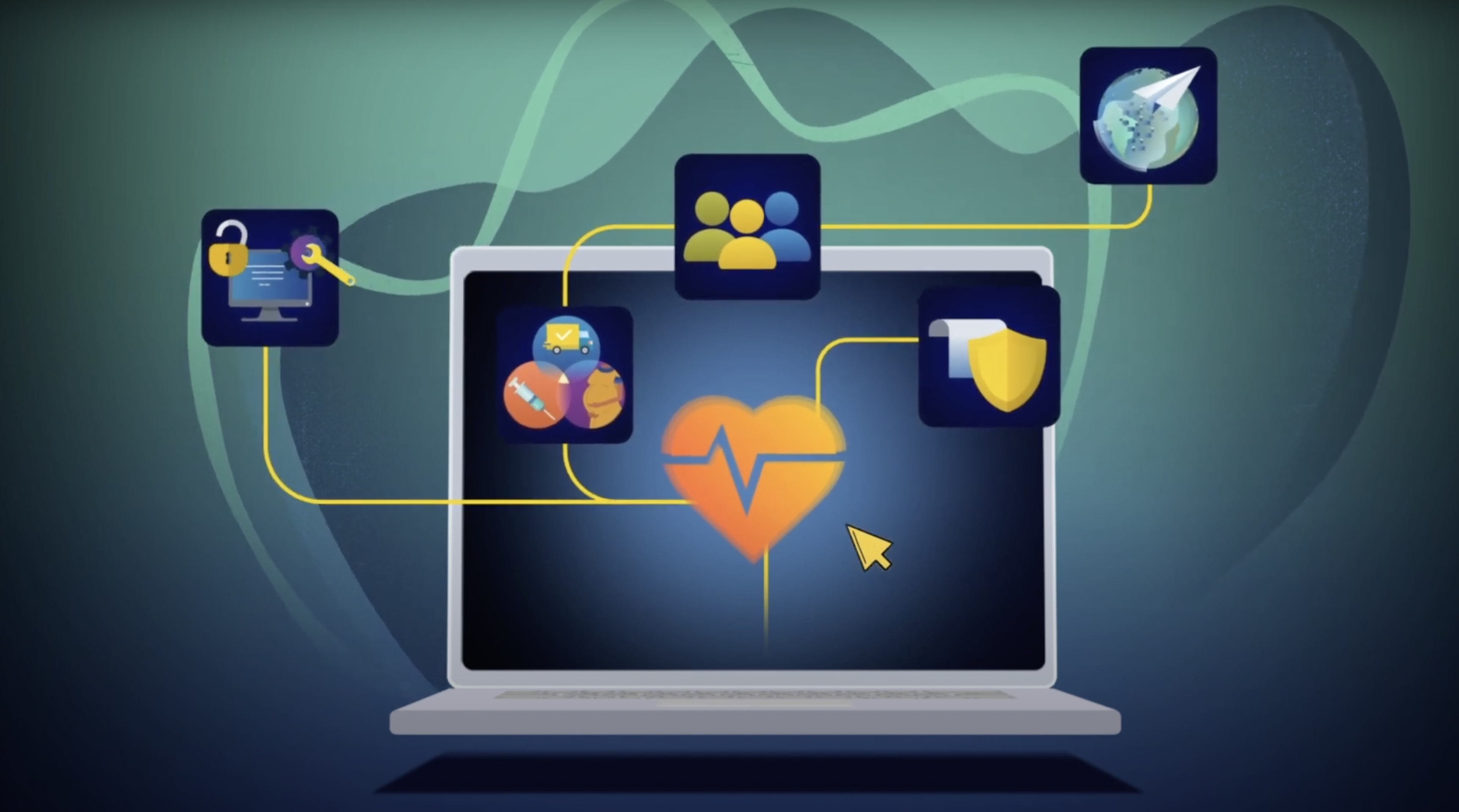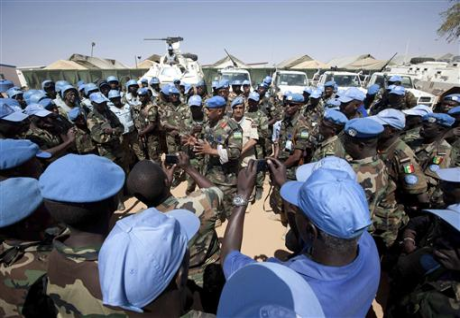For the frustrated governance advisor, exasperated force commander, and perpetually under funded election observer the notion that technology can solve our problems is a tempting one. But as Dr. Raul Zambrano of the United Nations Development Program (UNDP) and Dr. Matthew Levinger from the U.S. Institute of Peace (USIP) point out, the challenges faced by development and peace making professionals can only be solved by human ingenuity, social awareness and ethics. Mobile technology is only a means to more efficiently achieving this end.
Dr. Zambrano was kind enough to meet me at the UN’s New York headquarters for lunch to discuss the arc of E-Governance as a field and the role he see it playing in governance development programs. In 1992 E-Governance started with the goal of bringing email networks to the developing world. At the time faxes were the standard way to convey information between government officials, so the prospect of email as we now know it was enticing. Unfortunately, the push for universal email didn’t work out as planned.
Computing requires extensive up front resources and maintenance. The infrastructure in the developing world wasn’t there to make large computer networks sustainable. It also required people to travel to the computer centers, leaving traditional social networks behind to use the internet.
Dr. Zambrano, whose background is economics, pointed out the challenges associated with the infrastructure demanded for computing systems. “You need space, and the space needs to be air conditioned. This adds to electricity costs, and infrastructure. You need to maintain the computers and update them.” If the computers aren’t maintained, they go to waste as do the resources that were put into acquiring them.
“This is what makes mobile technology so important. It doesn’t require the extensive infrastructure, people can use the technology from within their traditional social networks, and they are able to have a broader voice through SMS, social media or email.” Mobile technology is the area that Dr. Zambrano believes is going to be critical in governance development going forward. “If I’m an parliamentarian, I can receive information from my constituents on their needs. If meet these needs, I can run for reelection on this platform. I no longer just leave my village, go the capital and disappear.” This is E-governance at work, where technology puts constituents in touch with their elected representatives.
As a Peace Corps volunteer in Samoa, I saw what Dr. Zambrano describe in action. In 2006 the first digital GSM mobile phone system came online. Prior to that mobile phones were rare, and only worked in the capital city. When the GSM system came online, mobile telephony became accessible countrywide, and suddenly texts, photos and emails were being sent from the farthest corners of the island. In four weeks people went from almost no mobile phones to essentially doing computing tasks like email and social networking, all on a platform that was accessible and didn’t require heavy infrastructure investment. Village leaders could text message neighboring villages, and information sharing became easier. Suddenly communication between the eastern most and western most points of the country, previously only done by landline, was easy.
So we know the value, but what are the risks? Dr. Matthew Levinger, an expert on the use of technology applications in conflict management and monitoring, points out that indeed there are considerations that development professionals should bear in mind.
Dr. Levinger gave me an example that came up during a training program with State Department personnel. “In Liberia there were rumors that an ethnic group that lives in the north was practicing ritual cannibalism, stealing the power of their dead enemies by eating them. What’s dangerous about a social media platform in a country where there is still a great deal of tension is that a rumor like this can go viral and can take on a life of its own regardless of veracity.”
Dr. Levinger also discussed information control. “There were cases where people thought that sending a text to Ushahidi was like calling 911. They expected that if their text showed up on a map, then help would come,” said Dr. Levinger. It’s incumbent on outsiders to make it clear what their technology’s purpose is and what its limits are. This is important in the best of circumstances, but in an emergency it can be the difference between life and death. The second point of this anecdote is introspective; when do we have to turn off the technology? We got live data from the event, but is worth someone potentially dying, cell phone in hand, thinking they made a call for help?
Despite the risks, the potential for emerging mobile and mapping technology to support positive change is unarguable. Whether it is deployed to make getting a birth certificate easier, documenting attacks on civilians in Darfur through a mapping platform, or facilitating communication between governments and the citizenry, mobile technology and media can reinforce existing social networks by giving voices to those who previously would have been unheard.
“Technology is not some kind of answer to all our problems,” says Dr. Zambrano. “Remember, democracy took over 100 years to fully develop in the U.S. and Europe, and we can’t go thinking that technology will make it happen in two or five years in places like Egypt or Iran. Maybe it shortens the process of democracy building, but what’s more important [in the domain of governance] is that emerging technology can give people a voice who may never have had one before.”
The author would like to thank Dr. Raul Zambrano, Dr. Matthew Levinger and Dr. Anthony Wanis-St. John for their insights and time while putting this article together.
Charles Marti n-Shields has served as a consultant to the U.S. Institute of Peace, the Academy for International Conflict Management and Peacebuilding, and the Churches’ Center for Theology and Public Policy. He is currently completing a long-term study of educational development evaluation in conflict-affected settings to be published in March 2011 by the University of Toronto, and consults on project development and risk analysis in post-conflict settings. He can be reached at charles.martinshields@gmail.com.
n-Shields has served as a consultant to the U.S. Institute of Peace, the Academy for International Conflict Management and Peacebuilding, and the Churches’ Center for Theology and Public Policy. He is currently completing a long-term study of educational development evaluation in conflict-affected settings to be published in March 2011 by the University of Toronto, and consults on project development and risk analysis in post-conflict settings. He can be reached at charles.martinshields@gmail.com.



